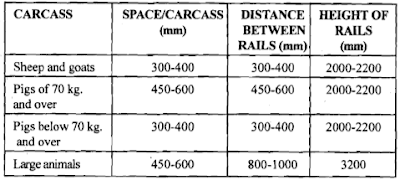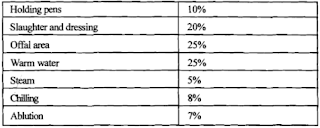Bacteria make up the largest group of microorganisms and therefore, we will deal the same in details. People often think of them only as germs and the harm they do. Actually, only a small number of bacterial genera are pathogenic (disease causing). Most are harmless and many are beneficial. The bacteria and fungi are most important in relation to food. The most important genera of bacteria known to occur in foods are listed below in alphabetical order:
Acetobacter, Acinetobacter, Aeromonas, Alcaligenes, Alteromonas, Bacillus, Brochothrix, Campylobacter, Citrobacter, Clostridium, Corynebacterium, Entereobacter, Erwinia, Escherichia, Flavobacterium, Lactobacillus, Leuconostoc, Micrococcus, Moraxella, Pediococcus, Proteus, Pseudomonas, Salmonella, Serratta, Shigella, Staphylococcus, Streptococcus, Vibrio and Yersinia.
Some of these are highly desirable in certain foods, while others bring about spoilage or cause food poisoning gastroenteritis in humans. One-third of bacteria causing food poisoning belongs to the family Enterobacteriaceae.
Shapes and Arrangement of Bacteria
There are thousands of different kinds of bacteria. Some differ only slightly and it takes a highly trained person and a number of biochemical tests to identify them. There are also groups, which differ greatly in growth habits and appearance (morphology), and are quite easily identified. But regardless of minor differences, most bacteria can be classified into five basic cell shapes namely cocci (roundshaped), rods (elongated) spirochete (spiral), vibrio (comma-shaped) and filament bacteria (branched). In addition to their different shapes, their cell arrangement also varies. For example, some round-shaped bacteria (cocci) are always grouped in pairs (diplococci), some in chains (streptococci) and some in the form of bunch of grapes (staphylococci). Diplococci are the kind that causes pneumonia. Streptococci are often associated with 'sore throat'. Staphylococci are familiar to many because of their role in infections causing 'pus formation' and some types of 'food poisoning'. Bacteria also vary somewhat in size, but average about 1125,000 inch. In other words, 25,000 bacteria laid side by side would occupy only one inch of space. One cubic inch is big enough to hold nine trillion average size bacteria.
 |
| Bacterial Cell Shapes and Arrangements |
The replication of bacteria
Bacteria reproduce by a process called 'binary fission', one cell divides and becomes two. Some can reproduce at a very rapid rate under proper conditions. If food and moisture are adequate and the temperature is right, certain bacteria can reproduce within as little as 20 minutes. Within 20 minutes, one cell becomes two and in 40 minutes, there will be four, and so on. In only eight hours, the original cell will have multiplied to nearly 17 million new bacteria. Of course, conditjons don't remain favourable for such a rate of reproduction for long. If they did, we could be burikd in bacterial cells.
 |
| Binary Fission |
We must use a microscope capable of magnifying 500 times in order to see a single bacterial cell. However, if that cell is allowed to grow on suitable food or solid media, it will reproduce rapidly into a colony consisting of millions of cells. The colony is visible to the naked eye. Plate counting, a technique which makes it possible to determine the number of bacteria (colonies of bacteria grown from single cells) in a food sample without the aid of a microscope. An important thing to consider in the growth ofbacteria is the ability of certain types to produce spores. A 'spore' is a dormant or resting state of a bacterial cell. There are certain basic differences between the spores and the active or vegetative bacterial cells. The spores develop inside vegetative cells at the central, subterminal or terminal (at pole) positions with or without bulging of the cells. Generally, these spores are formed only when environmental conditions are unfavorable for growth. Subsequently, these may be released in the environment as free cells. Spores are not easily killed. In fact, conditions that will quickly kill active bacteria have little or no effect on spores. A temperature of 72OC (pasteurization temperature) will kill bacterial cells within minutes, but bacterial spores can resist this temperature indefinitely. This is important to us since in all processing times for canned foods are calculated by using both the time and temperature required to kill bacterial spores. Bacterial genera producing spores are Clostridiurn and Bacillus.
 |
| Bacterial Spores |
Environmental and nutritive requirements of bacteria
We know that the availability of oxygen is essential for survival of human beings and animals. However, in case of bacteria, the requirement of oxygen for growth varies greatly. Accordingly, bacteria may be placed into one of the three groups.
The 'aerobic' bacteria thrive in the presence of oxygen and require it for their continued growth and existence. Other bacteria are 'anaerobic' and cannot tolerate gaseous oxygen. such as those bacteria that live in deep underwater sediments or some of those which cause bacterial food poisoning such as botulism. The third group is of 'facultative anaerobes', which prefer growing in the presence of oxygen, but can continue to grow without it.
Bacteria may also be classified on the basis of source of energy. There are two categories: 'heterotrophs' and 'autotrophs' . The 'heterotrophs' derive energy from the breakdown of complex organic compounds available from the environment. It includes 'saprobic or saprophytic' bacteria found in decaying material, as well as those that rely on fermentation or respiration. The other group is called 'autotrophs', which fix carbon-dioxide to make their own food source. They may be fueled by light energy (photoautotrophic) or by oxidation of nitrogen, sulfur, or other elements (chemoautotrophic).
Viewing of bacteria
Bacteria under microscope can be viewed in a smear (a film) prepared directly from a little amount of food item or a bacterial colony grown on an artificial media. The bacterial cells can be viewed easily under microscope once the smear is stained with special colouring reagents called stains. The most commonly used stain is the Gram's stain. On staining the smear with Gram's stains, the circular forms (cocci) or elongated shapes (rods) of bacteria which take pinklred colour are called as Gram-negative bacteria, while the blue/violet coloured as Gram-positive bacteria.
Classification of bacteria
Depending upon their staining characteristics and shapes, bacteria have been classified into different broad groups (families), specific groups (genus) and closely related members within the groups (species).
A) Gram-positive bacteria
i) Cocci
The family Micrococcaceae includes two genera (singular-genus) of significance i.e., Micrococcus and Staphylococcus. Representative of both the genera can be isolated fiom wide range of foods, of these the micrococci are principally spoilers of salted foods. Members of the family Streptococcaceae are facultative anaerobes and form non-motile cocci that occur typically in chains or tetrads depending upon the method of cell division. Three genera, Streptococcus, Leuconostoc and Pediococcus are involved in food spoilage and the foods involved include bacon, vacuum-packed meats and milk.
ii) Endospore forming rods
The genus Bacillus consists of species that are aerobic and facultatively anaerobic. Bacillus species are very commonly isolated from both raw and cooked foods.
iii) Asporogenous rods
Lactobacillus is the remaining genus comprising 'lactic acid bacteria'. Lactobacilli are non-motile rods that often occur in chains and they are anaerobic or microaerophilic (require small amounts of oxygen for growth). They cause spoilage of variety of foods, but like streptococci, they are used as starter organisms in the food industry.
B) Gram- negative bacteria
i) Spiral and curved bacteria: Only one genus, Campylobacter is significant in foods, being important cause of food poisoning.
ii) Aerobic rods and cocci: Most important genus in this group is Pseudomonas. Many species of this genus grow at low temperature causing food spoilage. Several species produce insoluble yellow, orange or blue pigments but these are not important in foods.
The genera Acetobacter and Alcaligenes occur particularly in dairy products and eggs causing spoilage problems while, genus Brucella cause foodborne illness in man either by contact with animals or typically, by consumption of unpasteurized milk.
iii) Facultative anaerobic rods: These Gram-negative, rod-shaped bacteria grow either under aerobic or anaerobic conditions. Two distinct families are recognized. The first, Enterobacteriaceae, contains eight genera of interest, namely, Escherichia, Salmonella, Shigella, Enterobactel; Serratia, Proteus, firsinia and Erwinia. The second family, Vibrionaceae, contains only two genera of interest, Vibrio and Aeromonas.
All organisms in the family Enterobacteriaceae are either motile with peritrichous flagella or non-motile. There is only one species E. coli, in the genus Escherichia.
It is important as an indicator of faecal pollution but many strains can cause food poisoning.
The members of genus Salmonella in the form of more than 2500 different serotypes are very important cause of food poisoning. The members of Shigella species are fairly related to salmonellae except that the former are non-motile and the latter are predominantly motile. Both genera are primarily associated with man and vertebrates, and Shigella organisms are again pathogenic to man causing food-borne infections.
Yersinia species is of no great significance in foods, but one species enterocolitica, is now recognized as a cause of food poisoning in man. The remaining genera, Serratia, Proteus and Erwinia, are sometimes implicated in food spoilage. Only one species, S. marcescens, is included in Serratia and it is characteristically pigmented bright red. Proteus species are important in the spoilage of eggs and raw meats held at ambient temperatures whilest Erwinia species are involved in the spoilage of vegetables.
Family Vibrionaceae contains species that are typically motile with polar (at one end of the cell) flagella. Mbrio species is important in food since different strains cause food poisoning, food-borne infections and food spoilage while Aeromonas are sometimes involved in food spoilage as well as an important fish pathogen.
Genus Flavobacteriurn comprises of yellow-pigmented species that are regularly found on fresh meats and fish. However, their growth tends to be overgrown by other bacteria during spoilage of these foods. It has been implicated in the spoilage of milk and milk products.














